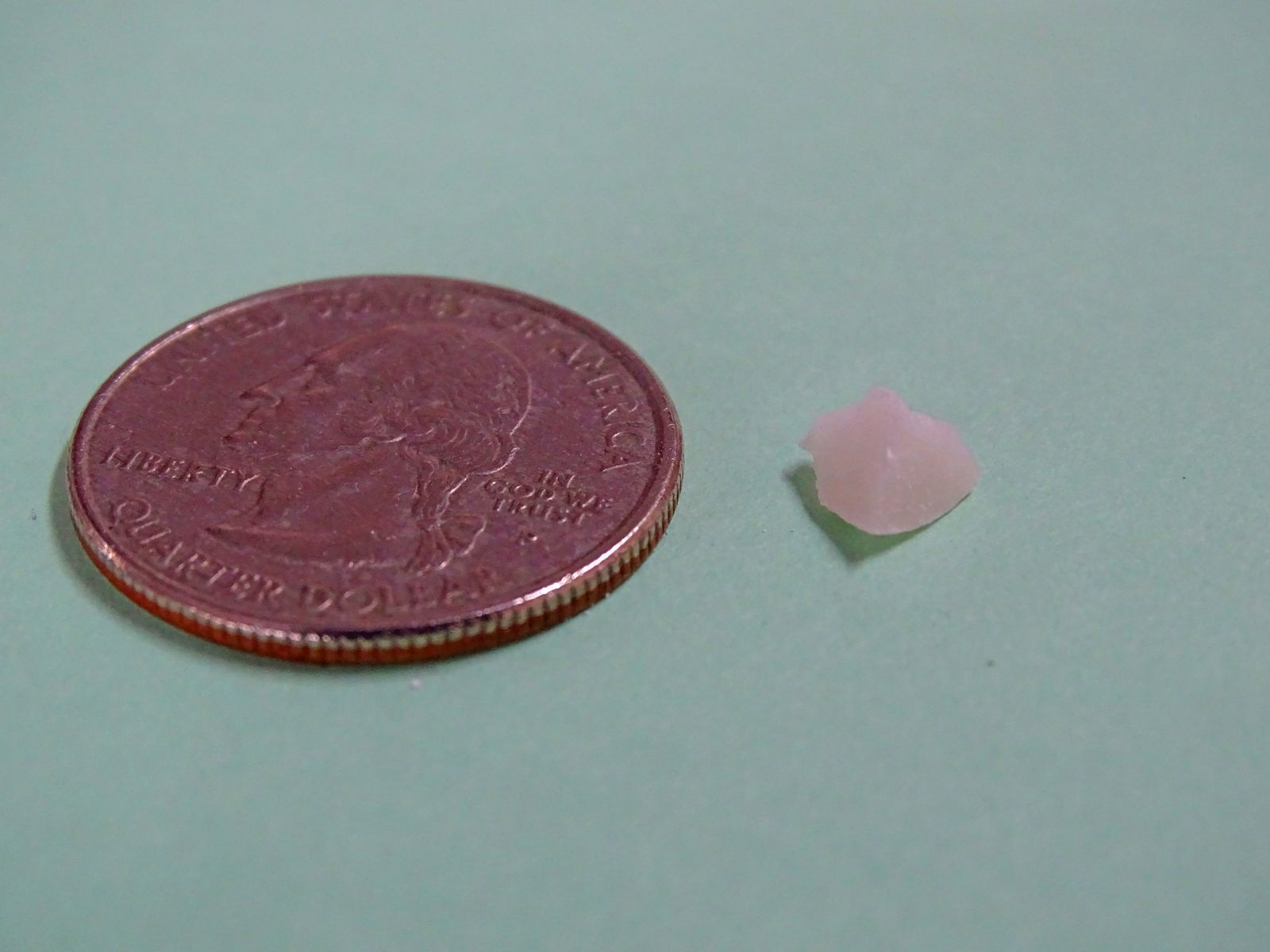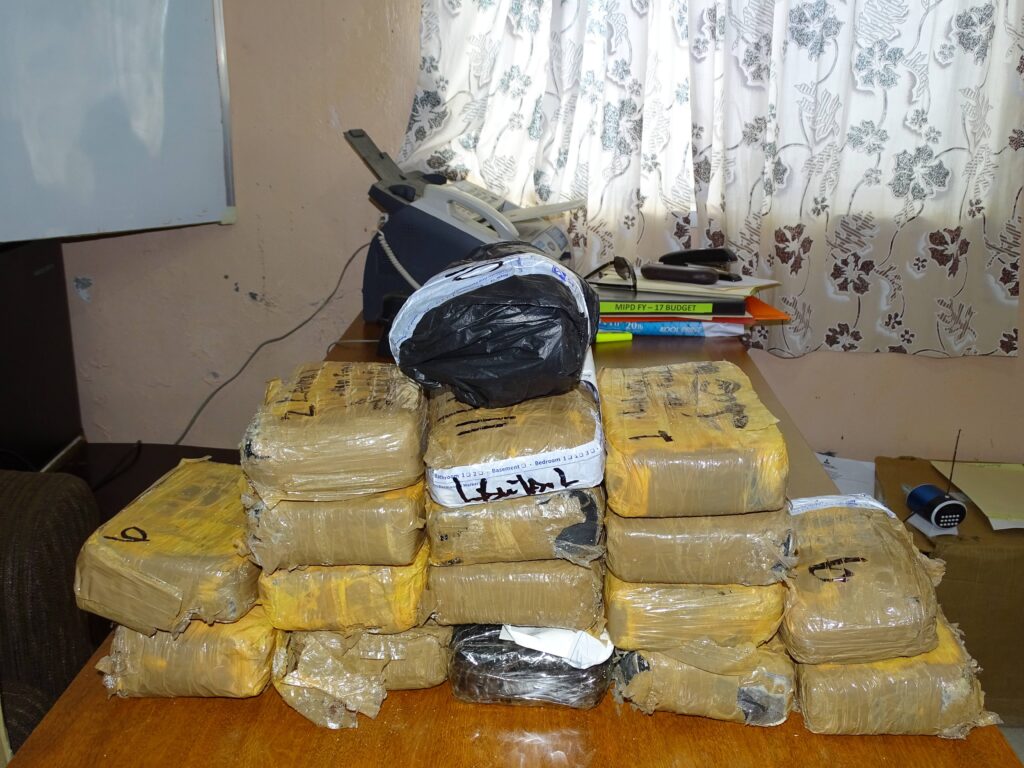Bob Kilma, charged with one count of “unlawful possession of narcotic drugs,” became the fifth Marshallese man to be charged with either possession or sale of crack cocaine “rocks.”
As the new charge was filed by the Attorney General’s Office against Kilma, another Marshallese man pleaded guilty and was sentenced to three years in jail for attempting to transport three one-kilo packages of cocaine from an outer island to Majuro on the national airline in August. Ainri Senight of Ailuk Atoll was given a sentence of 25 years, with three years to serve in Majuro jail in a plea bargain agreement that requires him to “testify voluntarily and truthfully as a witness for the Republic in cases over the next five years.”
The first person to be charged in the ongoing law enforcement crackdown on hard drug dealing, 56-year-old taxi driver Jackson Tartios, recently pleaded guilty to two counts of selling crack cocaine “rocks” for $5 each, the street price in Majuro for the one-to-two gram size pieces. He was charged based on a police sting operation using an informant to buy the drugs from Tartios. Others who are charged for possession and sale of drugs are awaiting further proceedings in court or are negotiating plea bargain deals.
Law enforcement authorities believe — and the attempt by Senight to transport cocaine from Ailuk to Majuro confirms — that most of the drug use problem in Majuro relates to large bundles of professionally wrapped cocaine that periodically wash into remote islands in the Marshall Islands. Large volumes of cocaine are reported to have washed up in Maloelap and Ailuk atolls, but were not reported to police as in past incidences of drugs washing into remote islands. Instead, they have been filtered into Majuro, the urban center, on boats and planes for processing into crack cocaine and street sales.

This file photo shows a cache of cocaine that washed into Enewetak Atoll in the Marshall Islands in 2016 and was turned over to law enforcement authorities. Marshall Islands Journal photo

A “rock” said to be crack cocaine that was purchased in May 2020 by a Marshall Islands Journal reporter as part of news coverage of the expanding hard drug problem in Majuro. Marshall Islands Journal photo
In May 2016, over 40 pounds of cocaine washed into the former nuclear weapons test site of Enewetak Atoll. Local residents turned the drugs into law enforcement authorities. Numerous other islands, including Rongelap, Bikini, Kwajalein and Mili have seen these large bundles of cocaine wash up over the past two decades. Law enforcement officials have two theories about the drugs washing up: they are the result of drug transshipment operations gone wrong due, for example, to the loss of a radio beacon attached to the drugs, or were tossed overboard when drug runners were in danger of discovery by law enforcement authorities, and the packages subsequently drifted to the Marshall Islands.
In 2014, an El Salvadoran fisherman drifted over a year from the Mexican coast and washed up on Ebon Atoll in the southern Marshall Islands. After his discovery at Ebon, University of Hawaii researchers conducted 16 computer simulations of drift patterns from the Mexico coast using weather and ocean data during the period of the fisherman’s drift and nearly all of drift patterns arrived in the Marshall Islands.
Drug usage in Majuro worsened in the absence of law enforcement action in 2019 and earlier this year. It became an issue of debate in parliament earlier this year.
In April, a Ministry of Health and Human Services staff member, in a social media post, described an increasing number of people seeking treatment at Majuro hospital for drug-caused health disorders. Patients with numerous complications stemming from possible usage of crack cocaine have been treated at Majuro hospital. “Users are brought into Majuro hospital with seizure episodes, intracranial hemorrhages (bleeding in the brain), confusion, hearing voices and violent thoughts,” said the health worker.
“Over the past several weeks,” said the Marshall Islands Journal in an editorial carried in the May 1 edition of the newspaper, “we see hospital staff reporting an increasing number of patients seeking treatment for severe drug-related health injuries, parents reporting their children are stealing their family’s belongings to sell to buy drugs, store managers reporting they have been forced to fire employees stealing things to buy drugs, several suicides with possible hard drug links, and parents angry about drug dealers hanging out at schools selling hard drugs to students. This is Majuro in 2020: A haven for drug dealers.”
Majuro Atoll Local Government police and the Marshall Islands Police Department criminal investigation divisions began focusing on the problem earlier this year, running sting operations to gather evidence on street dealers. Testimony of Brown Tartios, who is in the midst of negotiating a plea bargain for his charge of selling crack cocaine to a police informant, led to the new charge filed against Kilma. According to the charge sheet and police affidavit filed in the case by Assistant Attorney General Yolanda Lodge-Ned, Kilma allegedly gave Brown Tartios 100 pieces of crack cocaine to sell in December 2019.
Following this, on a weekly basis, Tartios said Kilma came to his house to bring him bags with 20 to 30 “rocks” to sell. This continued from December to February, when Tartios said he stopped selling the drugs. However, in May this year, “I started again selling cocaine for him because he came to my house and insists that I continue to sell for him,” Tartios told police.
Despite the crackdown by law enforcement on drug dealing in Majuro, the source cocaine on at least two outer atolls has yet to be confiscated.











